Here, we talk to one of Britain's most successful wildlife and natural history artists on her lucky break, dealing with rejection and what inspires her in her career.
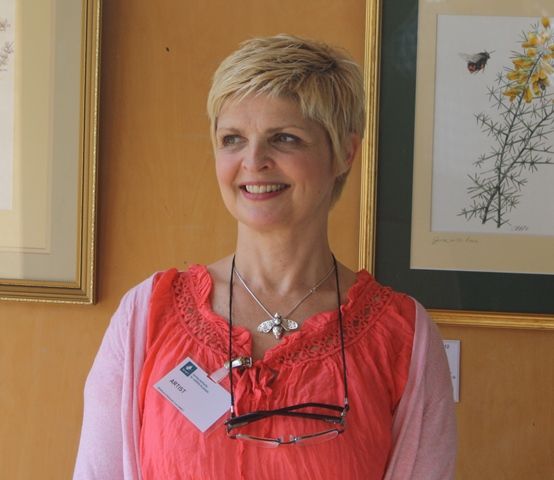
Have you always wanted to be an artist? What drew your focus to wildlife in particular?
Gosh, no! Even though I loved art ( I studied it to “A” level standard), as a young woman emerging from school, I believed that that you could never make a living from it and so went into a “safe” job – in the financial sector and then onto the university sector.
Art never left me though. I think, like with anything that is born in you, such as writing and music, it never leaves you – even if you do not physically practice it, you still see the world through a writer’s or musician’s, or in my case, an artists’ eyes.
Art slowly crept back into my life, starting as painting for pleasure or giving sketches away as presents.
Alongside art, I was always interested in wildlife. It came from my Dad. When we were growing up in the 70’s, I had such fab memories of the whole family watching Jacques Cousteau. My parents and siblings were totally transfixed by the hidden worlds that Cousteau and his contemporaries, like the young David Attenborough, showed us.
Eventually, these two passions were naturally drawn to each other and now I am lucky enough to make a living by combining both of them, whilst helping wildlife and conservation causes at the same time.
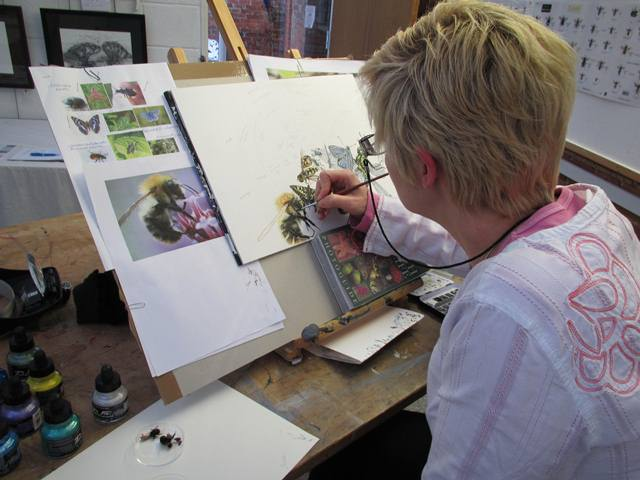
Where can we see your work featured?
My work is featured primarily on my website. This is where I give details about all of my latest work, courses, exhibitions, paintings and collaborations and so on. I also have my blog, which gives a more informal and chatty view of my work.
I sell a selection of my paintings through London’s Natural History Museum, and I’m a feature artist for an art agency called The Wildlife Art Company. This is an agency set up by BBC Zoologist, Mark Cawardine, to supply the market with natural history illustrations for publications needing top quality natural history artwork.
I’ve always supported a number of conservation causes through my work, and so I am often asked to do a piece to sell to help raise funds to support a particular cause. For example, I have produced work to help Scottish Wildcats, and you'll see more of this in my tutorials.
How did you start out in your career?
Once my youngest child was safely ensconced at school, I thought I would have a stab at doing my art full-time and would try to go freelance. I wasn’t working and therefore was lucky enough to have the spare time that it took to get everything going. I was also lucky that, as a family, we weren’t reliant on my second income. That was very important.
I knew that to become recognised as an artist, I needed a “hook”. I wanted to be known as a certain type of artist, as I felt that this would give me a stronger identity in what is a competitive global market. This is where wildlife and art married together so well.
In fact, I have gone one step further, as I specialise in the field of entomology (insects), which I am totally fascinated by. So that was it, I was going to launch myself as the bug-painting lady. Lots of people thought I was mad, but to become known in a niche market was exactly what I wanted.
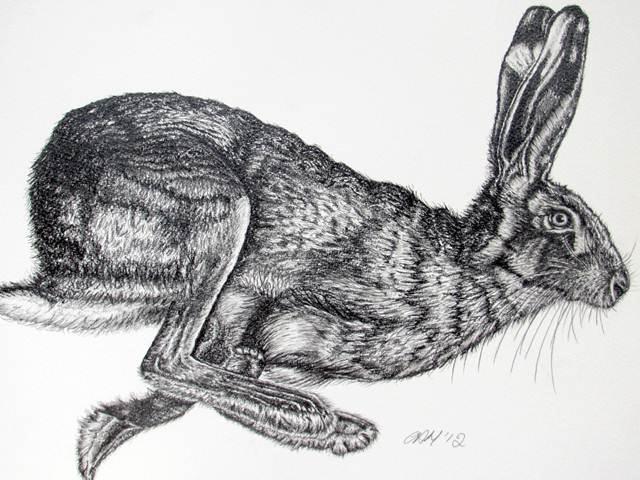
What was your lucky break?
I have had lots of lucky breaks as my career has progressed. All which have kept me going forward in the right direction.
It is very easy to get despondent as a struggling new artist. You may have an exhibition where you sell nothing, or organise an event that no one turns up to. All of that sort of thing can really knock your confidence and your resolve.
As a conservation artist, I have been very lucky to have had the opportunity to affiliate myself to great organisations such as Glos Wildlife Trust, Buglife and so many more. Each group has given me so much support in raising my artistic profile, and this has been incredibly important in publicising my work.
As time goes by, the groups that show interest in you go from local to national, even to international, on occasion, and then you start to get swept along on this wonderful tide that has its own natural momentum.
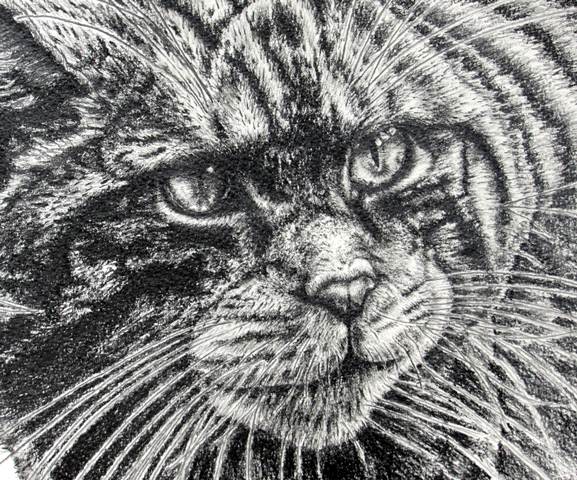
Can you describe a typical working day for you?
A typical working day for me is usually split between my studio and my computer, both of which are at home…so the commute is no problem!
Unless I have an immediate deadline to meet, I usually look at emails. When you have a number of projects on the go, it is really important that you keep up to date with communication. As well as producing marketable art, people also need to know that they can rely on you to be organised and prompt on the business side of things. It’s imperative that you can be relied upon to deliver.
I might then update my blog or put a new post onto my website, if there is something relevant and new to say.
Once that is done, I can get on with my painting. I have a lovely little sunny room in the house and it’s a place where I can easily slip into artistic mode. It is also a place where I can make a mess!
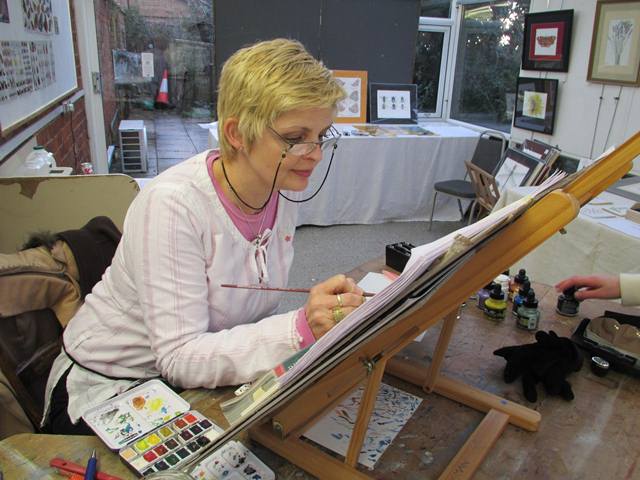
Have you had to deal with rejection? Were there ever any times when you felt like giving up?
I can recall two occasions where I nearly gave up. Both were after exhibitions. The first was after a two week solo show. I didn’t sell a thing...and I was so shocked!
The turning point came after some great advice from my husband - I started selling prints. These are a fraction of the price of paintings, so they’re much more accessible. In turn, that meant that I could take my work into relevant retail outlets, like museums, where they sell in a steady stream.
The second time I nearly gave up was when I organised a joint show with an established artist. It was great to work with her, as she taught me so many things, lots of which I still use now. The only problem was that I sold tenth of what she sold and it knocked my confidence so much. I thought that my work wasn’t marketable and not good enough to sell. Of course it wasn’t – but that’s how it felt.
It takes a while to build up your confidence. That only comes with lots of experience. Negative feedback is never going to be nice; but you just have to remember that it really is impossible to please everyone.
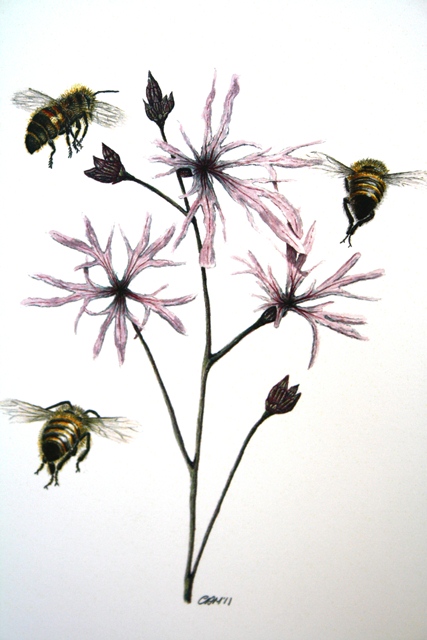
You’ve often been involved in conservation projects; what would you say is the most important part of your work for you?
It gives me great pleasure to be asked to take part in conservation projects. That is such a huge compliment to me.
To me, having the opportunity to make a difference in conserving wildlife, no matter how small it is, is the most important part of my work. I think that if we all have the opportunity to use our skills to make a positive difference in the world, than we all should grab it.
What advice would you give to someone starting out?
Three things:
- Be true to what you want to do. Don’t necessarily listen to those around you who offer you advice about what to paint. You will know in your heart that you are onto a good thing – I stuck to my bugs, and it’s been worth it.
- Never give up. Unless you are going bankrupt trying to break into the market, never give up.
- Always be professional. Be known as a good artist, but it is just as important to be known as a reliable, efficient and pleasant artist too. Remember you are your own ambassador.
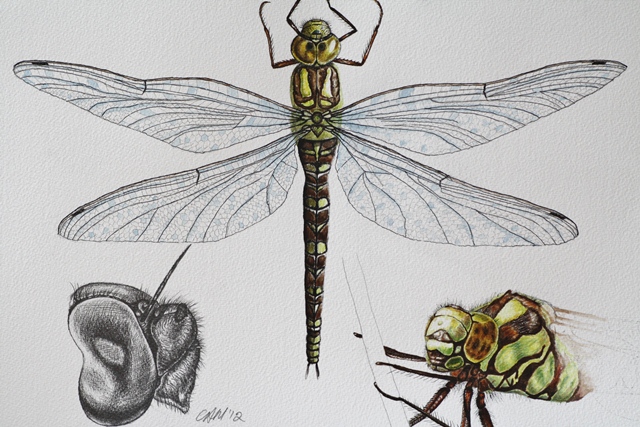
Could you tell us a little about the tutorials you’re going to be producing for Writers’ & Artists?
I thought that to give a detailed insight into what I do, it would be useful if I demonstrated different subject matters and also different mediums. So, for one of my tutorials, I will be using paints (watercolours) and will be painting my favourite thing – insects! I will choose a few different species, in order to demonstrate how to achieve different paint effects.
For my second tutorial, I will demonstrate how I do other subject matter too. I love producing mammalian work using graphite pencils, as they give great texture and depth. For this, I have chosen a current conservation project that I am involved with, helping to save the Scottish wildcat.
See Cath's tutorials at Painting Tutorials With Cath Hodsman: Part 1 and Painting Tutorials With Cath Hodsman: Part 2.
Comments